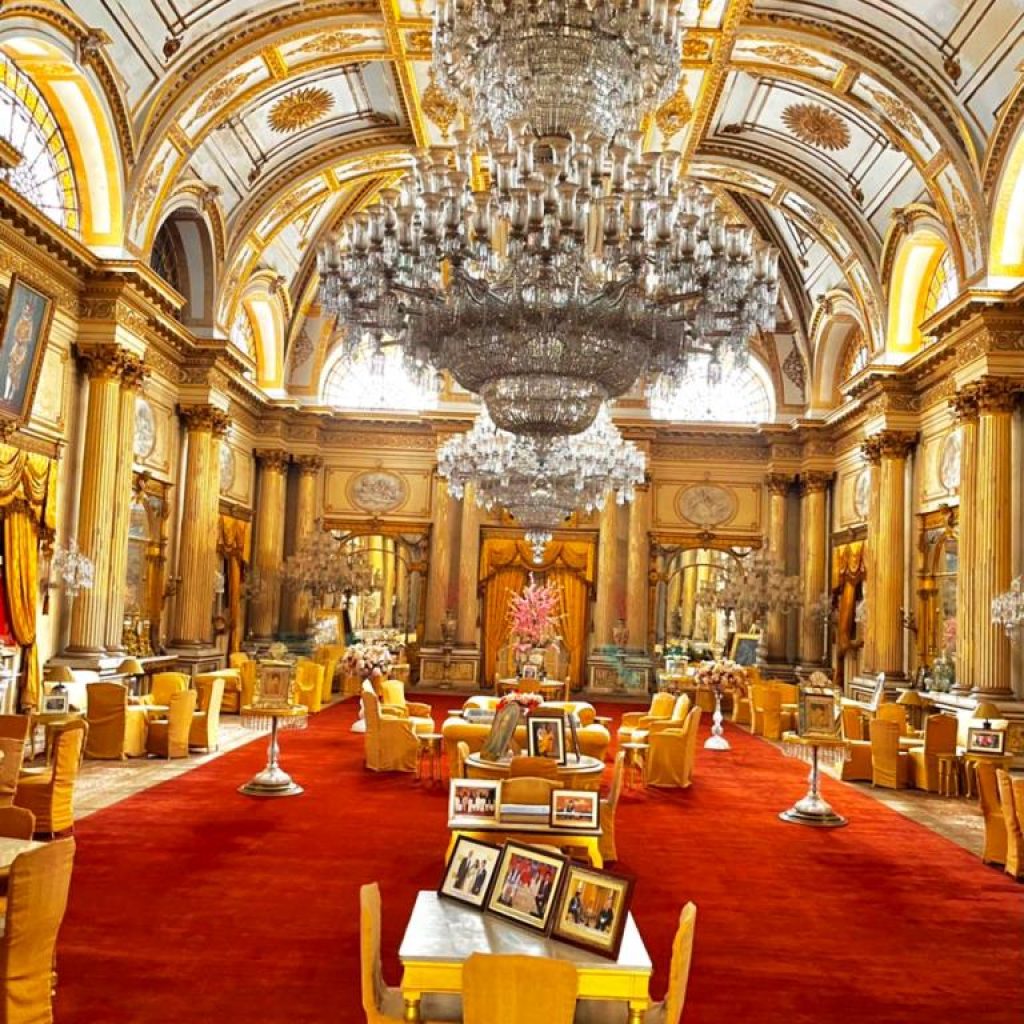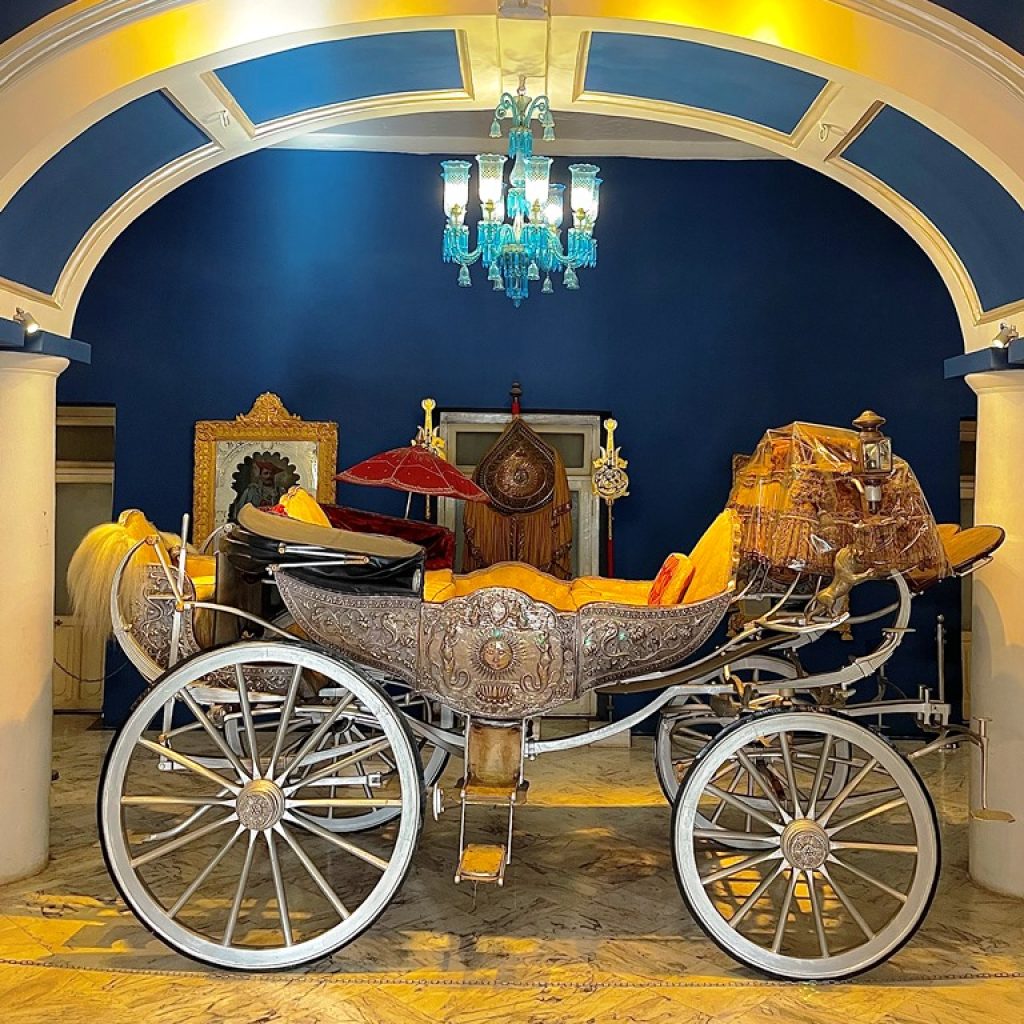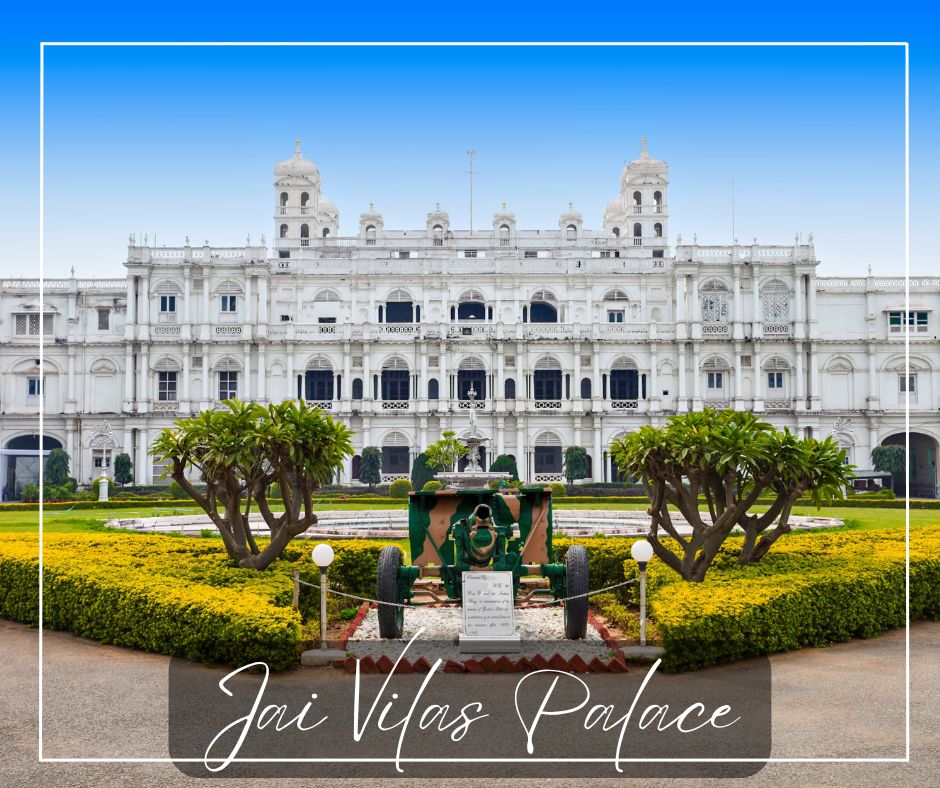In the heart of Gwalior, a palace stands,
With tales of grandeur and royal strands.
It’s walls whisper stories, its halls sing songs,
Of a time when royalty thrived, where they belonged.
Nestled in the historic city of Gwalior, Madhya Pradesh, the Jai Vilas Palace stands as a magnificent example of royal grandeur. Built in 1874 by Maharaja Jayajirao Scindia, the palace is not just a symbol of opulence but also an architectural marvel that blends European styles with Indian elegance. Known for its Italianate design, grand chandeliers, and royal collections, Jai Vilas Palace is a living testament to the splendor of the Maratha Scindia dynasty.
Let’s take a journey through the history and architecture of this iconic palace. We will uncover the unique design elements, interesting facts, and the story behind the creation of Jai Vilas Palace that continue to captivate visitors from around the world.
A Royal Dream in the Making
The story of Jai Vilas Palace begins in 1874, when Maharaja Jayajirao Scindia, the ruler of Gwalior, decided to build a residence that would not only serve as his home but also leave a lasting impression on visitors. The purpose behind constructing the palace was twofold. It was meant to serve as a Western-style residence for the Maharaja and his family, and it was also designed to impress the Prince of Wales, King Edward VII, who was set to visit Gwalior in 1875.

The palace was designed by Lieutenant Colonel Sir Michael Filose, an English architect who had a deep connection with Gwalior. Known as “Mukhel Sahib” by the locals, Sir Michael was also responsible for several other architectural projects in the city, including the Central Jail and Moti Mahal. He was tasked with the challenge of merging European architectural styles with the grandeur that Gwalior’s royal family was known for.
A Blend of European Architectural Styles
The architecture of Jai Vilas Palace is nothing short of extraordinary. It is a mixture of various European architectural styles, primarily Italian Renaissance, Tuscan, and Corinthian designs. The palace stands as a tribute to the best of European architecture, built in the heart of India. Here’s a closer look at the key architectural features of the palace:
1. The Tuscan Influence:
The first storey of Jai Vilas Palace showcases the Tuscan style, known for its sturdy and simple design. Tuscan columns, with their smooth, unadorned surfaces, can be seen adorning the exterior walls. These columns reflect the strength and elegance of the Roman tradition, giving the palace a solid foundation.
2. The Doric Touch:
The second storey of the palace is designed in the Italian Doric style, which is known for its more detailed and decorative columns. Doric columns are characterized by their simplicity and grandeur, without being overly ornamental. This level of the palace is more refined and adds to the majestic atmosphere of the structure.
3. The Corinthian Flair:
Finally, the third storey of Jai Vilas Palace brings in the Corinthian style, the most decorative and elaborate of the classical orders. Corinthian columns, with their intricate floral designs and lavish carvings, crown the top of the palace, adding a sense of grandeur and elegance. The use of these three architectural styles gives the palace a multi-layered, dynamic appearance.
Unlike many other palaces in India, Jai Vilas Palace does not heavily rely on Indo-Saracenic features or Indian motifs. Instead, it presents a European masterpiece built in the heart of India, with minimal local influence, making it a unique piece of architecture in Gwalior.
The Durbar Hall and Chandeliers
One of the most breathtaking features of Jai Vilas Palace is its Durbar Hall. This large and majestic hall was designed to host important ceremonies and royal gatherings. It is known for its lavish décor, with ceilings that are gilded and adorned with gold.

But the most striking feature of the Durbar Hall are the two grand chandeliers, each weighing 3,500 kilograms (about 3.5 tonnes) and towering at 12.5 meters (42 feet) in height. These chandeliers are some of the largest in the world, and their grandeur is only matched by the story behind them. Before they were hung in the Durbar Hall, it was said that 12 elephants were made to walk on the roof to test if the structure could bear the weight of these massive chandeliers! The sight of these chandeliers glittering in the hall is truly mesmerizing.
A Treasure Trove of Art and Royal Relics
In addition to its stunning architecture, Jai Vilas Palace is also home to a museum that showcases the rich cultural heritage of the Scindia dynasty. In 1964, Rajmata Vijaya Raje Scindia, in memory of her late husband Maharaja Sir Jiwaji Rao Scindia, converted parts of the palace into a museum. Today, the Jiwaji Rao Scindia Museum holds one of the finest collections of royal artifacts.
The museum’s collection spans centuries, with items dating back to the 18th and 19th centuries. Some of the most remarkable exhibits include:
- The Persian Carpet: Woven by the skilled craftsman Mohammad Ibn Ja’far, this Persian carpet is a true marvel of craftsmanship. With an astonishing knot density of 500 knots per square inch, it is one of the finest carpets ever created. Originally designed to be displayed as a wall hanging, this exquisite carpet features portraits of around 180 significant historical figures from all over the world. Among them are icons like Jesus Christ, Napoleon Bonaparte, Nadir Shah, George Washington, and Louis XIV, each carefully depicted to celebrate their place in history. This beautiful work of art is not just a carpet, but a window into the past, showcasing a blend of culture, history, and incredible craftsmanship.
- The Silver Train: Jai Vilas Palace is also famous for its unusual and charming dining feature, the Silver Train. Imagine a train running on miniature tracks, serving food to royal guests! This unique silver train, with cut-glass carriages, was made in 1906 and used to serve drinks to guests during royal banquets. It still runs in the banquet hall of the palace, making visitors feel like they are part of a royal celebration from a bygone era.
- The Silver Chariot: In 1923, Maharaja Madhav Rao I ordered the creation of the beautiful “Silver Chariot” to be used in a procession dedicated to his beloved mother, Maharani Sakhyaraje. This chariot, considered a sacred and ceremonial object, is a true work of art. On each side of the chariot, you can see the initials of Maharani Sakhyarajel. The chariot is also decorated with stunning designs, including winged horses and the ‘makara,’ a mythical creature from Indian legends that is closely linked to the revered Goddess Ganga. This chariot is not just a vehicle, but a symbol of love, respect, and divine connection.

These exhibits, along with the library and art gallery, make Jai Vilas Palace not just a place to admire royal architecture but also a center of history and culture.
Fun Fact: The Elephants’ Test of Strength
As mentioned earlier, to ensure the roof could support the weight of the chandeliers, elephants were used to walk on the roof of the Durbar Hall. This feat of testing the roof’s strength with elephants adds a fascinating layer of history to the palace. It is said that 12 elephants were made to walk on the roof for days, ensuring the chandeliers were safe to be installed.
This test of strength became a part of local folklore and is a tale that continues to captivate visitors even today. The sheer effort and grandeur behind such a decision speak volumes about the engineering genius of the time.
The Legacy Continues
Today, Jai Vilas Palace is not only a historical monument but also the residence of the Scindia family, which continues to hold significance in Indian politics. While a portion of the palace has been converted into a museum, the legacy of the Maratha Scindia dynasty lives on in the remaining quarters. The palace has witnessed the unfolding of history, from royal celebrations to the struggles of post-independence India.
Visiting Jai Vilas Palace is like stepping back in time. Its architectural splendor, royal artifacts, and the tales they tell of a bygone era leave a lasting impression on every visitor. It is a place where history meets artistry, and where visitors can get a glimpse of the royal lifestyle that once thrived in Gwalior.
Jai Vilas Palace is more than just a palace; it is a story in stone and marble, a living testament to the vision and grandeur of Maharaja Jayajirao Scindia. Its European-style architecture, rich royal history, and magnificent interiors make it a must-visit landmark in Gwalior. So, the next time you find yourself in this historic city, don’t forget to step inside this architectural gem and experience the royalty, luxury, and charm that define the legacy of the Scindia dynasty.



0 Comment